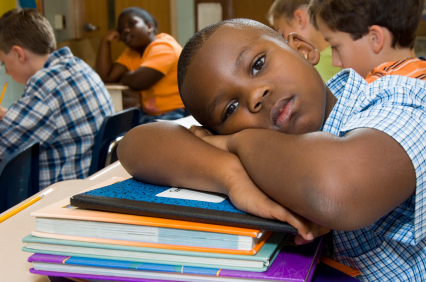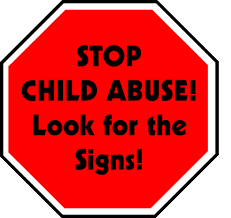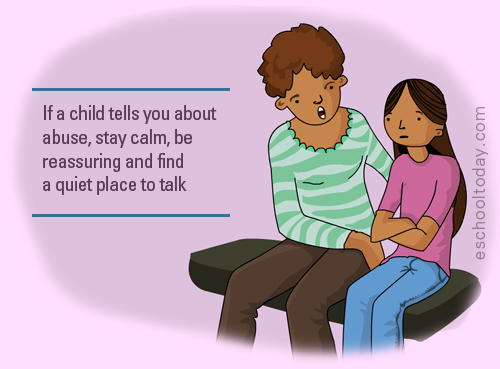Suicidal Ideation Vs. Suicidal Intent: How to Assess | Craig McNally

Helping professionals such as doctors, nurses, social workers and mental health professionals are all guided by the ethical standard of confidentiality. In a nutshell, confidentiality is considering everything a client or patient shares in the session sensitive, private, privileged information, and not suitable or allowable for sharing with others –without consent. There are however exceptions to confidentiality, which may be determined by legislation, such as the Child Care and Protection Act 2004. The Act identifies who it refers to as Prescribed Persons (which include all Helping Professionals), holding them to reporting factual or suspected incidents of abuse or ill treatment of a minor. Another exception to confidentiality which as far as I know, is not on the law books, but an ethical standard, is reporting or providing protection to a client who is considered a risk to himself (and/or others).
When a client reports self harm, and specifically in this article I am referring to suicide, it is important that the Clinician determines whether the client’s suicidality is ideation or intent. What do I mean by ideation? A client who has suicidal ideation usually reports that they have thoughts of dying, or a desire to not exist anymore. While ideation is a clinical symptom that always warrants attention, it has been my experience that besides depression, clients who have thoughts of dying or a desire to not be around anymore, are facing a life situation for which a practical outworking, and flexing of effort appear ineffective. The unchanging circumstances create anxiety and emotional distress which are unbearable to the client. As such, their defence mechanism ‘drive’ chips in and a sole, likely escape of the frustration presents as absenting one’s presence from the situation, since they are seemingly powerless to do anything else. Dying becomes the only actionable ability.
While this is not the only explanation of why clients engage in suicidal ideations, I have had numerous clients who ideate about dying, and when I inform them that I might have to contact their next of kin or have them hospitalized, either of two things happen: One is that they quickly gain perspective and insist that they really don’t want to end their life, they just don’t know how to solve their problem, or on the other hand, there are clients who present with an insatiable narcissistic urge, and out of their craving for attention, say that they feel like killing themselves. Again, when I inform these clients of my ethical responsibility to ensure they do not harm themselves, their ‘need’ for attention wanes, and they all of a sudden gain insight.
These instances are however not textbook templates or applicable in every setting, but does underscore the need to be able to clinically assess and case conceptualize on an individual basis. So when then is a client intent on completing suicide? Well for starters, when we talk about suicide intent, we mean that the client or patient will likely take his /her own life if left to themselves or is unsupervised. In other words, there are enough indications based on the clinical assessment, that indicate self harm is imminent.
There are a number of questions which inform suicidal intent, but clinicians should note that the following circumstances are strong prompts for a high risk client:
- Losing a family member or friend to suicide
- Client or patient has a history of suicidal ideation or attempt/s
- Client has suffered a major loss (death of a family or friend, loss of a pet, relationship, opportunity, reputation, failing an exam etc.)
- The client or patient has recently received a terminal diagnoses
- The client or patient is baring severe self-guilt
Besides these circumstances (list not exhausted), a clinician should include in his or her assessment, the following questions, which inform whether the client has a plan, and how well developed it is:
- When will you kill yourself?a. It is ok to directly state what the client wants to do. I suggest you use the client’s words, but it is also important to allow the client to hear what they are planning to do, and hear it in plain words, not euphemism.b. This question will alert the Clinician to a likely/specific day or time of the attempt.c. Information about day or time indicates opportunity. If the client is unable to identify a day or time, this could mean they have little opportunity.
- Where will you kill yourself? a. This of course informs the location the attempt will be made. This means measures can be put in place to lessen the opportunity of being alone/unsupervised.
- How do you plan to kill yourself?a. This question speaks to the lethality of the method, and how quickly death could occur. For example, death is far swifter if a client shoots him/herself, verses he or she taking a cocktail of pills.
- Do you have access to (the means)?a. If a client does not have ease of access to a means of inflicting self harm, then the opportunity or likelihood of lethality (and death) is significantly minimized.b. Access will also inform supervision measures such as where the client is being monitored during treatment.
Following this checklist is not a guarantee that a client or patient will not attempt or complete suicide. What it does however, is provide an opportunity to respond to the hopelessness of a client, and offer treatment. The more affirmatives the client responds to, is the greater the possibility of self harm.
Written by Craig McNally, JP, Licensed Associate Counselling Psychologist
Learn MoreChildren & Violence: How can we help? | Marie Reynolds
 Children repeatedly exposed to violence, whether directly through community or domestic violence, or physical abuse, or virtually through film, TV and the news media, may show signs of trauma. Trauma is experienced when a person’s normal coping mechanisms are overwhelmed, leaving them feeling helpless, hopeless and unsafe. Because every person, including a child, is wired for survival, threat to safety activates brain mechanisms that are programmed to protect by fighting, fleeing or freezing. Normally, the brain returns to normal functioning once the threat is over. However, when that threat to safety is ongoing, such as in the case of a child living in a violent community or home, or repeatedly exposed to violence in the media, the brain may be in constant fight, flight or freeze mode, and the survival response may be easily triggered by seemingly harmless experiences, such as not having what they want, a parent talking loudly, or a sudden loud noise.
Children repeatedly exposed to violence, whether directly through community or domestic violence, or physical abuse, or virtually through film, TV and the news media, may show signs of trauma. Trauma is experienced when a person’s normal coping mechanisms are overwhelmed, leaving them feeling helpless, hopeless and unsafe. Because every person, including a child, is wired for survival, threat to safety activates brain mechanisms that are programmed to protect by fighting, fleeing or freezing. Normally, the brain returns to normal functioning once the threat is over. However, when that threat to safety is ongoing, such as in the case of a child living in a violent community or home, or repeatedly exposed to violence in the media, the brain may be in constant fight, flight or freeze mode, and the survival response may be easily triggered by seemingly harmless experiences, such as not having what they want, a parent talking loudly, or a sudden loud noise.
What does trauma look like in children?
Signs of trauma often look like disruptive behaviour, a child just being rude and defiant, or quiet and withdrawn. If you are seeing any of the following in your child or student, consider whether they may have experienced trauma, such as experience of or exposure to violence:
- Difficulty concentrating or paying attention
- Difficulty focusing eyes to read
- Inability to finish tasks
- Difficulty learning new information well
- Fidgety or unable to keep still
- On edge, or on guard even when in a safe environment
- Easily startled
- Can’t stay seated
- Compulsive talking
- Easily distracted
- Short tempered, always ready for a fight
- Aggression
- Defiance
- Inattentiveness
- Daydreaming
Some children, especially boys, act out their fear and anger by hitting bullying, teasing and engaging in dangerous activities. Others, particularly girls, turn their fear and anger inward, causing physical ailments such as frequent headaches or tummy aches, bedwetting, or showing signs of withdrawal, anxiety or depression.
Caregivers and teachers often respond to these behaviours with impatience, frustration, reprimand and punishment—all of which may be interpreted by the survival brain as threat, triggering even more of the problem behaviour. The challenge, too, is that many times the adults have also been exposed to the same violence or other trauma producing events, and are in fight, flight or freeze mode, too!
What can teachers and caregivers do?
First, parents and teachers need to be a “safe space”
for children who have experienced trauma and violence.
- Be calm and stay cool when dealing with challenging behaviours. Remember, many of these behaviours are ways in which their brains are trying to help them survive. Reacting rather than responding will appear to be yet another threat from which the brain will want to protect the child.
- Be aware of your own responses. Before reacting to the behaviours, take a moment to check yourself. Take a step back, plant your feet solidly on the ground, and take a few deep breaths through your nose into your belly, and slowly out through your mouth. Wait until you are in a calm state before responding in a soothing voice. If necessary, take a personal time out to engage in a brief calming activity—whatever works for you.
- Provide comfort and a listening ear. Give children space to talk freely about their feelings, worries or fears. After they share, use your own words to repeat what you heard them say. Pay attention to body language, tone of voice and facial expressions, too.
Protect children from exposure to violence, as much as possible
- Minimise children’s exposure to media violence. Avoid discussing violent news etc. in the presence of children, especially young children. Television news can be particularly graphic, so restrict children from viewing. Filter the news and limit to newspaper or radio.
- Monitor children’s TV and movie viewing so as to limit repeated exposure to scenes of violence and aggression. Pay attention to ratings.
- Pay heed to video games ratings, as well. Stick to those rated for children.
- Avoid fighting and arguing in front of children. Even babies will be negatively impacted by fighting and marital conflict in the home. Seek counselling if you are having frequent and intense conflict with your spouse or partner.
Here are some useful exercises and activities that can help children manage the effects of violence exposure:
- Let children draw their worries or fears, and then draw the opposite. Let them talk about what they drew.
- Lead students in focused or relaxation breathing exercises and meditations, e.g. Heart and Belly Breathing,or Popcorn-Candle Breathing described below.
- Have children draw about a time they felt good, happy, and safe recently or before the violence. Then have them study their artwork, close their eyes and notice where in their bodies they can feel the goodness, happiness, etc, Let them discuss the difference between the pleasant feelings and the unpleasant ones. Point out how they were able to feel the pleasant feelings just by thinking about that happy time. Let them know they have the super power to feel those pleasant feelings any time they want, just by thinking about their happy time.
- Similarly, you can have children draw a picture of their safe place. This can be real or imagined, Have them talk about their drawing, and describe what it feels like, and smells like. Let them know that they can always go to their safe place by looking at their picture or imagining it in their minds.
- Physical activities can help to ground children in the present moment, rather than dwelling in the past, violent event(s). Activities like dancing with stomping movements or drumming can be very helpful for grounding children. Ask them to notice how the ground or drumming surface feels as they dance or drum. Follow up with a moment of quiet breathing.
- When children are experiencing difficult emotions, have them choose a crayon that they think is a good colour for that feelings, and then scribble or rapidly colour the feeling out onto paper, filling up the paper as they release the feeling. When they are finished, they can talk with you about what it was like doing it.
- Let children engage in physical activities such as running and jumping to help release some of that survival energy.
- Use bubble blowing to practice deep breathing. Blowing giant bubbles is a great way to practice the deep, slow exhales that activate the calming (parasympathetic) nervous system. Besides which, bubble blowing is just fun!
It’s good to follow up release exercises with grounding and or relaxation exercises. This will also help children to learn how to regulate their energy and emotions.
Heart and Belly Breathing
- Ask children, “Place one hand on your belly and the other hand on your heart.”
- Ask them to turn on their superpowers of noticing, just like a detective or scientist.
- Next, ask them to see if they can notice their breathing, and if they can notice what happens to the hand on their belly when they breathe in, and what happens when they breathe out.
- Let them keep noticing for about a minute. Tell them that if they start to think about or notice something else, that’s okay. If that happens, they can just go back to noticing the hand on their belly again.
- For older children, you can next ask them to see if they can notice when the breath goes up behind the hand on their heart. Have them notice how the air moves in through the nose, into their belly, and up behind the hand on their heart as they breathe in, and then down from the heart area to the belly and out through the nose as they breathe out. Keep noticing from 1 to 3 minutes.
Popcorn Candle Breathing
Say to the children:
“Imagine you have some popcorn (or pizza or fried chicken) in your right hand, and a birthday cake with candles in your left hand. We’re going to smell the popcorn and then blow out the candles. First, let me show you how.”
Demonstrate by inhaling the “popcorn” in your right hand deeply through your nose, and then blowing out the “candles” in your left hand with a long out breath through your mouth. It is best if the exhale (blowing out) takes about twice as long as the inhale (smelling the popcorn).
Have the children do it with you five (5) times.
Written by Marie Reynolds, Paediatric Psychotherapist & Clinical Social Worker
Learn MoreIdentifying Signs of Abuse In Children
 In recent times there has been increasing reports in the news regarding the amount of abuse occurring against our nation’s children. Abuse does not occur on a singular scale. It consists of three different forms – physical, sexual, and emotional (neglect). Everyone who endures abuse reacts to the traumatic experience differently. As it relates to abuse in children, it may be hard for persons to recognize the signs.
In recent times there has been increasing reports in the news regarding the amount of abuse occurring against our nation’s children. Abuse does not occur on a singular scale. It consists of three different forms – physical, sexual, and emotional (neglect). Everyone who endures abuse reacts to the traumatic experience differently. As it relates to abuse in children, it may be hard for persons to recognize the signs.
It may be difficult for a child to manage their emotions and behaviour after enduring a traumatic experience. Children who endure abuse may experience shame, guilt or confusion. They may experience fear which may cause them to be scared to tell anyone about the abuse, especially if the abuser is a relative or family friend. Based on their apprehension to identify or discuss their abuser, it is helpful to look out for the following warning signs (Mayo Foundation for Medical Education and Research, 2015):
- Changes in behaviour — such as anger, aggression, hostility or hyperactivity
- Withdrawal from friends or typical activities
- Rebellious or defiant behaviour
- A sudden loss of self-confidence or a display of depression, anxiety or unusual fears
- Changes in school performance
- Frequent absences from school
- Reluctance to leave school activities, as if he or she doesn’t want to go home
- An apparent lack of supervision
- Attempts at running away
- Attempts at suicide
Depending on the type of abuse, the signs and symptoms may vary. These however are just warnings and may not solely indicate that the child is being abused. They could be indicators for other conditions. Professional support and assessments may need to be done as a follow up to ascertain and address what exactly is happening with the child.
Let’s explore the three major forms of abuse and how they may present in a child’s behaviour.
Emotional Abuse Signs
- Headaches or stomach aches with no medical cause
- Social withdrawal or a loss of interest or enthusiasm
- Loss of self-confidence or self-esteem
- Depression
- Delayed or inappropriate emotional development
- Desperately seeks affection
- Avoidance of certain situations, such as refusing to go to school or home or taking transportation to go to school or home
- A decrease in school performance or loss of interest in school
- Loss of previously acquired developmental skills
Signs of Neglect
- Poor hygiene
- Eating a lot in one sitting or hiding food for later
- Poor record of school attendance
- Poor growth or weight gain
- Lack of clothing or supplies to meet physical needs
- Taking food or money without permission
- Emotional swings that are inappropriate or out of context to the situation
- Lack of appropriate attention for medical, dental or psychological problems or lack of necessary follow-up care
- Indifference
Physical Abuse Signs
- Unexplained injuries, such as bruises, fractures or burns
- Injuries that do not match the given explanation
- Untreated medical or dental problems
Sexual Abuse Signs
- Blood in the child’s underwear
- Trouble walking or sitting or complaints of genital pain
- Sexual behaviour or knowledge that’s inappropriate for the child’s age
- Pregnancy or a sexually transmitted infection
- Statements that he or she was sexually abused
- Abuse of other children sexually

Photo retrieved from http://www.eschooltoday.com/child-abuse/physical-child-abuse/help-for-physically-abused-kids.html
Reviewing your interactions with your child
As a parent or caregiver here are some questions to ask yourself to encourage awareness of your interactions with your child.
- Do I blame the child for problems that occur or deny that problems exist at home or school?
- Do I show little concern for the child?
- Am I unable to recognize emotional or physical distress in the child?
- Am I constantly blaming or belittling my child and describing him or her with negative terms like “good for nothing”?
- Am I using harsh physical discipline or ask teachers to do so?
- Am I demanding an inappropriate level of academic or physical performance?
- Am I expecting my child to provide me with attention and care or become jealous of other family members getting attention from him or her?
- Am I overtly limiting my child from interacting with others?
Another question to ask is whether the caregiver or parent has a tendency to provide contradicting explanations or no explanation at all for their child’s injuries.
Support
The warning signs mentioned above are provide to help identify the different characteristics of abuse that may occur in children. The child may not be empowered enough to speak out for themselves due to fear or other emotions. It is encouraged that we become advocates for the child. This would entail seeking help and support for the child by reporting it to the specific protective agencies as well as seeking medical and/or psychological services.
Reference:
Mayo Foundation for Medical Education and Research (2015). Diseases and Conditions – Child Abuse.
Written by Lesli-Ann Belnavis, Registered Art Therapist
Learn MoreDying to be Beautiful 2014
Please share this poster.
Please come: Be informed, get involved.
For more information click & go to the conference site.
Learn More
STREAKING IT BLUE!
Yes you can! Whether it’s for the RUN or for the FUN this 2-part fiesta is all for a good cause: raising funds for children throughout the Caribbean who have been diagnosed with cancer. Check out their website, by clicking on the picture. Registration for the run ends this Friday. Please share.
Learn MoreBe a Superhero for the Planet. | EARTH HOUR
Check out Super Pocoyo!
Anyone can be a superhero for Planet Earth. Everything you do so conserve electricity helps everyone of us!
Turn off the lights when you are not in the room.
Turn of the TV when no one is watching it.
Dont leave appliances (radio, microwave) plugged in when they are not being used.
This Earth Hour wear a superhero costume or even just a mask and send us your pictures in the dark #ct2tSuperhero. 8.30 – 9.30 pm today is just the beginning.
http://earthhourstg.prod.acquia-sites.com/pocoyo
Learn MoreThinking Beyond the Fear: Dealing with a Sexually Active Daughter
As a father I am utterly dedicated to my daughters safety, and I am far from naive. And the surest way to keep her safe is to be willing to keep our connection strong, to give her guidance on worldly matters and to support her in trusting herself …
When she entered puberty, we started having more frank discussions. Not just about the mechanics of sex but also about the roles, power plays, pitfalls and misunderstandings. About the complex web of emotions that come into play while discovering yourself and another.
Parenting a teenager is the ultimate test of love and understanding for many of us. How did you do it? How will you prepare your daughter for acknowledging and managing her sexuality? Pretending that it doesn’t exist is simply not an option.
Keeping the channel of communication open and being honest really helps teens to make good decisions. Several studies have shown that parents who TELL their teens to wait for a particular milestone (marriage, first job, over 20 years) are the single most important factor in reducing teenage sexual activity.
Learn More





